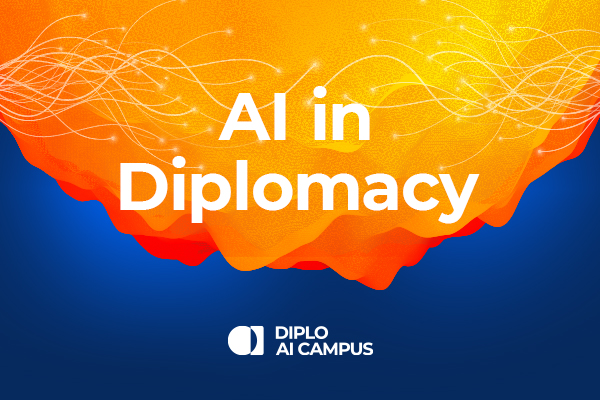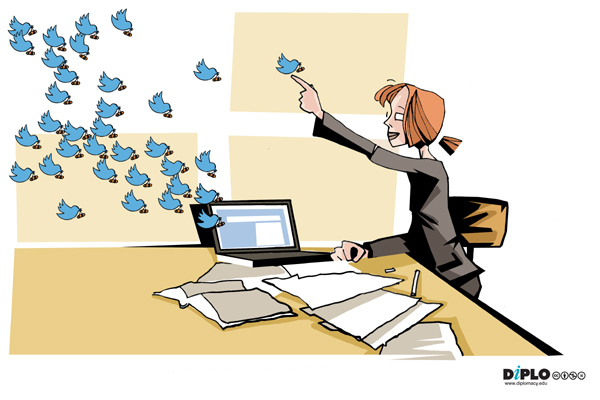Public diplomacy
In an era where borders blur in the digital world, public diplomacy has become the art of fostering mutual understanding between societies, not just governments. It goes beyond traditional statecraft by leveraging soft power – the ability to attract and persuade – through cultural connections, shared values, and strategic storytelling. Unlike the closed-door negotiations typical of classical diplomacy, public diplomacy operates in an open environment, engaging global citizens where they are: online, in classrooms, and through media.
Defining public diplomacy: wide vs. narrow approaches
Public diplomacy (PD) does not have a universally accepted definition. Scholars like Fitzpatrick have identified over 150 different interpretations. These definitions generally fall into two categories:
- The wide definition positions PD as an extension of soft power, encompassing cultural exchanges, educational outreach, media engagement, and networked diplomacy. This approach views PD as integral to diplomacy, emphasising societal trust-building over state-centric tactics. As Shaun Riordan argues, “Increasingly in the twenty-first century, diplomacy will be public diplomacy.” While holistic, this definition risks operational vagueness, as specialised domains like cultural or educational diplomacy require distinct frameworks.
- The narrow definition: This field focuses on influencing domestic and foreign publics on foreign policy issues. This pragmatic lens suits foreign ministry PD departments, enabling targeted campaigns (e.g., countering disinformation) without overstepping into sectors managed by specialised agencies.
Public diplomacy in multilateral relations
The goal of public diplomacy for international organisations is to ensure a positive perception of their activities among opinion formers, the media, and public members who will consequently support continued involvement by their governments in the organisation’s activities. This will involve persuading their audiences that their activities are relevant and yield positive benefits.
To implement a successful communication or public diplomacy strategy, an international organisation must be clear and unanimous about its goals and the message it wants to convey. Organisation secretariats should embrace new technology and imaginative methods of spreading their messages and identify ways to accommodate the circumstances of the membership. All member states should promote the objectives and values of the organisation. They should provide the necessary financial resources, expertise, information, and technology to allow the staff to project the right image and message.
But several questions remain. Who should be responsible for explaining and promoting the organisation to the national populations within the member states? Should the organisation’s secretariat take the principal role, or should it be the respective governments? How far can an international secretariat go in identifying shortcomings within the membership to uphold the organisation’s goals to preserve overall credibility? Who is best placed to assess public perceptions through opinion surveys and other instruments, and who is best placed to respond to specific concerns or questions? Should the role of the secretariats be limited to anodyne glossy publications or web-based factual information, or can they take on a more strategic role? The institutions should not be subject to the vagaries and unpredictability of national politics. They can, in principle, take a long-term approach to public diplomacy, which is often beyond national governments. Few regional or international organisations can yet be said to do this effectively.
Excerpts from Diplo’s online course on Public Diplomacy – text written by Liz Galvez
Pillars of effective public diplomacy
- Cultural diplomacy involves showcasing heritage, arts, and language to humanise nations. For instance, South Korea’s K-pop diplomacy turned a cultural wave into a global influence, fostering connections beyond politics.
- Education and exchange: Building long-term relationships through scholarships, youth programs, and professional networks. The Erasmus+ program‘s alumni form a living web of EU ambassadors, spanning millions.
- Strategic communication: Crafting narratives that resonate without echoing propaganda. New Zealand’s “Open Hearts, Open Borders” response to the 2019 Christchurch attack blended empathy with policy, amplifying its moral authority.
- Digital engagement involves leveraging platforms to listen, respond, and co-create. A well-known real-world example of digital engagement in public diplomacy is Sweden’s “Curators of Sweden” initiative on Twitter (@sweden). Although the project concluded in 2018, it continues to serve as a benchmark for innovative and participatory digital public diplomacy. This initiative moved beyond mere broadcasting to foster genuine engagement and collaborative narrative creation.
Diplo’s research in public diplomacy
Diplo engages in multidisciplinary research focused on public diplomacy. This evidence-based research aims to understand and improve practices within public diplomacy institutions globally. Diplo specialises in addressing the needs of countries with limited financial resources that seek to conduct effective public diplomacy campaigns. This research complements existing studies in the field, primarily focusing on the perspectives and experiences of major players like the United States, the United Kingdom, and China.
Explore Diplo’s dissertation library, a repository of dissertations by our Master’s in Contemporary Diplomacy graduates.
Topics include international relations and geopolitics, small-state diplomacy, cybersecurity, internet governance and digital policy.
The digital transformation of public diplomacy
Public diplomacy, the art of cultivating mutual understanding and influencing global narratives, has entered an era of profound transformation. Once dominated by cultural exchanges, radio broadcasts, and carefully crafted speeches, it now thrives—and contends—with the dynamism of digital tools. The shift from monologue to dialogue, accelerated by technology, has redefined how states engage foreign publics, but it demands a nuanced balancing act between innovation and timeless diplomatic principles.
Traditional public diplomacy often resembled a one-way broadcast, with states projecting narratives to international audiences. Today, digital platforms like Twitter, TikTok, and LinkedIn have turned diplomats into participants in global conversations. Embassies now engage directly with citizens worldwide, bypassing traditional gatekeepers. States now jostle with NGOs, activists, and even viral algorithms for narrative control. The goal? To foster dialogue, not dictate. As Joseph Nye foresaw, the power now lies in “whose story wins.”
Three technologies are reshaping public diplomacy’s toolbox:
- Social media: Platforms enable instant, visually driven storytelling. Consider how Nordic embassies use Instagram to showcase sustainability efforts or how African nations leverage YouTube to highlight cultural heritage.
- Data analytics: Diplomats gauge public perceptions and tailor messages by mining social media sentiment or search trends. Estonia’s e-governance outreach, for example, uses data to identify tech-curious audiences globally.
- Artificial Intelligence: Chatbots like Singapore’s “Ask Jami” offer 24/7 consular assistance, while AI-driven content personalises outreach; however, ethical concerns about manipulation persist.
In addition to foreign ministries, technology giants such as Meta and TikTok, cultural institutions like the British Council, and grassroots movements such as Climate Strike all shape public perceptions.
Measuring public diplomacy in the digital age: Metrics and challenges
In the digital era, states employ a mosaic of quantitative and qualitative metrics to gauge public diplomacy success, though approaches vary by strategic priorities and technological capacity. Using sophisticated tools like Brandwatch allows organisations like the FCDO (Foreign, Commonwealth & Development Office) to move beyond simple numbers. They can analyse the tone and emotion in the vast online conversation surrounding their campaigns or country image. This helps them understand how people react positively, negatively, or neutrally to specific messages or events..
Meanwhile, the UAE’s” Digital Diplomacy Observatory” uses AI-driven dashboards to track real-time online conversations, measuring shifts in narrative influence across Arabic and English-speaking audiences. France prioritises cultural impact, assessing digital reach through platforms like Culturethèque (its global e-library) and correlating online engagement with spikes in visa applications or student exchanges. China, by contrast, leans on big data to quantify the spread of state-aligned narratives, monitoring platforms like Weibo and TikTok for alignment with “discourse power” (话语权) goals.
However, critics argue this conflates volume with genuine resonance. Smaller states like Estonia focus on niche digital diplomacy ROI, tying e-residency sign-ups or cybersecurity partnership inquiries to targeted online campaigns. Challenges persist: viral metrics often overshadow trust-building outcomes, while misinformation skews sentiment analysis. Ethical concerns include Canada’s “Digital Diplomacy Charter,” which explicitly avoids invasive data harvesting and prioritises transparency in its #FeministForeignPolicy evaluations.
Ultimately, as digital landscapes fragment, measuring effectiveness demands a hybrid approach: balancing algorithmic insights with human-centric surveys and grounding data in the timeless diplomatic imperative of fostering authentic, enduring connections.
Ethics in public diplomacy
Integrating artificial intelligence (AI) into public diplomacy requires the establishment of rigorous ethical frameworks to maintain trust, which is essential for effective international engagement. At a minimum, these guidelines should emphasise three key principles: transparency (disclosing AI-generated content and its data sources), accountability (ensuring human oversight of algorithmic decisions), and equity (mitigating bias in training datasets that could distort cultural or political narratives).
UNESCO’s 2021 Recommendation on the Ethics of AI presents a foundational principle: AI should enhance, not replace, human judgment in diplomatic contexts. For example, while chatbots like Singapore’s virtual consular assistants can streamline services, they must avoid mimicking human empathy in a way that manipulates user sentiment.
Additionally, sentiment analysis tools for tailoring messages, such as those deployed by Sweden’s Innovation Diplomacy teams, should anonymise data to protect individuals’ privacy and prevent microtargeting vulnerable populations.
A global benchmark, similar to the EU’s ethics guidelines for trustworthy AI, could establish harmonised standards ensuring that AI serves as a bridge to mutual understanding rather than a tool of algorithmic coercion. The ultimate test is whether AI applications empower the public with diverse perspectives or subtly engineer consent – a distinction that defines ethical public diplomacy in the digital age.
Technology and diplomacy evolves, and power shifts. Yet public diplomacy’s essence remains rooted in a simple truth: relationships matter. Whether through a centuries-old cultural tradition or a TikTok campaign, the goal is unchanged—to foster empathy in a world too often defined by division.
Today, public diplomacy is not just optional; it is critical. Countries must combine authenticity with innovation in a world where a TikTok trend can influence policy debates. The digital age favours those who listen as much as they communicate, creating connections beyond fleeting viral moments.
The future belongs to diplomats who can code in Python and human narratives.
Click to show page navigation!






